I arrived back in Guwahati after Meghalaya and sure enough there was my permit. Why did I ever doubt it. Obviously the ‘commission’ had paved its way. I hastily made plans to get to Tawang as soon as possible as December is notorious for snow falls and these can close the roads and cause landslides. Travelling to Tawang involved a 5 hour bus journey to Tezpur, followed by a shared taxi to Dirang (a further 8 hours) and then another shared taxi for the final leg to Tawang (a further eight hours). The shared taxis would be a crammed 10 people in a jeep again.
The city of Tezpur lies on the banks of the Brahmaputra, actually not so far from Kaziranga
. It is a dusty market city and the gateway to the state of Arunchal Pradesh (AP). Raj set me up with a nice guest house in the centre of town that was quite plush in a sort of Indian way. I certainly spent the afternoon using the internet when it worked and the rest of the time explored the art deco market where not a lot of English was spoken.
My alarm call for the shared taxi was 4.45am. Driving during night is strongly discouraged in AP by the state, so its always an early morning start for the shared taxis or sumos as they are called here. Strangely I got up to find the hotel deserted and mostly locked, and so I decided to wait on the street for my pick up. By 5.15am the sun was beginning to appear and I watched several pigs and two monkeys fight over a huge pile of rubbish that had appeared opposite overnight (oh these things can start to interest you in India).
Eventually the sumo arrived, and I got the front seat
. In the back was Kees, a Dutchman who was well over six foot tall, something which makes a sumo journey doubly unpleasant. We speed through the countryside towards the looming mountains of AP. We had a breakfast stop at the border where both Kees and myself had to present our permits and register. Here a man from Delhi insisted on having his picture taken with both of us, I suppose we did look somewhat unusual.
The journey to Dirang was to take eight/nine hours through some of the most beautiful countryside. Soon we were amongst the mountains following the river up the valley until we reached the first mountain and started our long winding climb. There were an enormous number of army outposts here, dotting the landscape. The Chinese had invaded here in 1962 and almost reached Tezpur before turning back, unexpectedly. Actually not many Indians realised they were in the state and nobody knows why they turned back. It was obvious that the present administration were not going to make the same mistake, and at times there were more soldiers than Yaks in the valley
.
This area of AP is also known as Mon or Monpaland after the indigenous people who live here. They are more Bhutan or Nepali looking than Assamese. They have their own language, cuisine and the women are dressed in crimson skirts with crimson blouses and some heard scarfs. Sometimes both the men and the women wear this hat that looks like a wig with four ponytails. This is apparently so the rain can drip off their heads without going in their faces. They are very friendly.
We reached Tezpur after a bone numbing eight hours. Our driver was not the best, frequently taking his eyes off the road, smoking cigarettes, talking on the mobile and being quite reckless. Not what you want on narrow one track roads with army trucks coming at you and thousand of meters drops on one side. He drew the wrath of the local passengers when he slide the car a full 15 meters on one stretch
.
Dirang was nestled in one such valley and was a convenient stopping off point for the journey to Tawang. It stretched along the length of a beautiful valley, with what was termed Old Dirang at one end with traditional Monpa stone brick buildings around a cascading river. The new town was where all the accommodation was located and was a far less enchanting place. The usual rubbish and squalor looked somewhat odd and thankfully out of place in these dramatic surroundings. I had booked into the Awoo Resort in Dirang, which was just outside town on a ridge. It looked like a 1960s version of a Butlins holiday home, complete with missing manager. Kees decided to come to Awoo as well, but the staff there kept us in the drafty restaurant for 60 mins while they tried to find Ashish, the manager. Our mobiles did not work here, which was not a surprise, but what was.... was that theirs did not either and the landlines were also out of order
. The electricity (needless to say) was off as well. The previous day in Tezpur was 26C, here was a bracing 3C at 4.00pm - so that added to the room urgency.
Ashish finally arrived and he turned out to be someone who thought he could speak English when in fact he could not, and this added to the surreal nature of the experience. Whilst in Dirang, Kees was meant to be finding his pre-booked guide, but with the communications issues, this looked like a real challenge. We went to our rooms, only for me to find mine had one window broken - so I insisted on a change. Ashish did not want me to change, so taped over the glassless window and insisted the frame would now close. Well he lost that one.
Kees and I decided on an early dinner by torchlight in the droughty restaurant (the staff continually opened the windows as the temperature plummeted) and he also decided against the 2km walk into town to try and find his guide
. The electricity also looked decidedly problematic as darkness descended. Ashish provided some OK food and then we had a spark from the lights which enabled at least a hot shower. After that Ashish did light a fire in the drive way and we sat huddled around that as the temperature dropped below 0C. We were over 2000m up though.
After a good nights sleep under a mountain of blankets and a plastic bottle filled with hot water, I got a welcome hot shower. Fortunately the lights worked for a short time at 5.30am so I could get ready for my next sumo. Kees kindly came to join me for breakfast and found that the phones were still not working. I wished him luck as I departed and hoped he would find his guide. I had seen nothing of Dirang, but was quite pleased to leave.
The next sumo was dominated by Monpas, most of whom did not speak English. They did not speak Hindi either much to the other non-Monpas traveller’s disgust. He was from Goa and was retired and “travelling to see my country”. Immediately we left Dirang we started an arduous climb up to the pass at Sela Pass which is 4250m high, one of the world’s highest passable roads. Here we were enveloped in clouds and mist in no time. With visibility down to 5m, I could only just make out the roadside vegetation covered in icicles and luckily could not see the sheer drop which is famous for unnerving travellers to Tawang
. The traffic was intense with army trucks, road repair vehicles, buses and sumos competing for the one lane pot hole filled road space. I was grateful I could not see the drop as we passed each other on this narrowing twisting dirt track. Going was at times painfully slow in the cramped sumo. We encountered frequent traffic jams and I was not surprised Tenzing from my Tawang Guesthouse said average speed was 25Km per hour over this part of the journey.
The Monpas kept the windows open, which made the cold bitter and my clothes could simply not cope. The heating in the Tata sumo was not functioning either, but of course the stereo worked and full blast Bollywood/Indian music further numbed my senses. All of a sudden we burst through the damp cloud into brilliant blue sunshine and the top of the Sela Pass. Here we skirted around an attractive frozen lake and marvelled at the snow covered peaks, before we descended down the other side at a much more gradual gradient. The road here deteriorated further into a dirt track with frequent boulders from landslides hampering progress. At least the sun was warmer.
Eventually we reached the top of the Tawang Valley. This was a jaw dropping view the likes of which I have rarely experienced. The fact that it was bathed in sunshine just made it even more magical. To the east were two dominant mountains with a huge glacier nestled on one. To the west was Bhutan in the distance and thousand of traditional Monpa villages clinging to the mountain sides. To the north was Tibet and some of the places I had been in 1991 and 1998. This is a land of payer flags, Gompas (monasteries), Stupas and buddhist Monies. The valley itself was quite simply - vast. Breathtaking.
We were only 50 Km from Tawang now, but that was at least a further two and half hours at best. Now we descended all the way down to the valley floor, a fair descent from 4250m. We past through Jiang on the way stopping from some rather over priced and disappointing Momos. Over the river (on a prefab army bridge) we went, and that gave my bones a 5 second respite from the incessant beating these ‘so-called’ roads were handing out.
Back upwards again we drove towards the 3500m of Tawang, past many lovely farming villages as we climbed. Rice paddies, wheat fields and many crops, most already harvested and the fields looking golden brown in the sunlight. Suddenly at the top of the mountains the enormous monastic complex of the Tawang Gompa loomed like a huge town in its own right. The final 17 Kms took over 60 minutes and it was a relief to pull into the immense army barracks on the outskirts of the city. The city itself sprawled over all the peaks of the mountains. The air felt thin, it was freezing and I was happy not to be walking.
Soon the driver dropped me off at the Dolmakhangsar Guesthouse where I was met by Tenzing’s mother and shown straight to my room. This was wood panelled and comfortable with something I had not seen for a while - a carpet. She also mentioned there was a prayer meeting happening at the Gompa in 30 mins. So I hurriedly dropped my stuff, grabbed my camera and ran out.
The guest house was just a few hundred meters from the monastery entrance. On the way there I was surprised to see so many soldiers. However at the entrance was a big sign welcoming the Buddha’s Relics, that were at the monastery for a week on loan, today being the last day.
At the entrance were a group of soldiers and a metal detector (actually - a wooden frame with a black wire running along the wood - not plugged in). Once through I was advised no cameras and no mobiles were allowed in the monastery, which was a shame, so I deposited them with the military. Up to the central courtyard I climbed to see hundreds of red Buddhist monks lined up seated on the floor beginning the service. I joined a few visitors and Indian tourists lining the sides of the courtyard. This what I had seen in 1998 over the boarder in Tibet, but been unable to photograph as I had run out of film (in those days). It was also a shame I could not photograph this event as well. It was a great scene with the Abbots in the front with their conical yellow hats and many Monpa villagers behind the rows of monks, dressed in their traditional crimson clothing. It was very colourful.
At that moment a young monk came over and pressed into my hands a cup of tea. This was most welcome as the weather was decidedly cold and getting colder as the sun dropped. Unfortunately the tea was Yak Butter Tea. This is what I had absolutely hated in China and now I was re-introducing to my body - Yuk! Just as I remembered the drink it was creamy brown in colour with globules of yellow fat on the surface. It had a taste of dirty milk with a very prominent unrefreshing saltiness. Again as soon as I had taken a mouthful, two monks appeared next to me offering to fill up my cup. It was cold so at least the temperature of the tea helped. It was at this moment, as I was grimacing, that I noticed an Indian tourist over the other side of the courtyard calmly photographing this great scene. I thought “you lucky devil, getting your camera in unseen.” But the more I looked, the more I noticed others using their cameras. Then I saw a woman in army trousers with a handheld video camera filming the scene.
So I approached the nearest soldier and asked “can I take some photographs of this scene?” “No you are not allowed,” he replied. “But they are,” I said pointing at the Indian tourists. As he looked at them, I was approached by another monk offering more Yak Butter Tea. I asked him and he replied, “no you cannot take photos of the Relics.”
“Yes I understand that, but I want to take picture of the monks here in the courtyard.” He agreed verbally that this was not a problem and standing next to him, the soldier then said I could go and get my camera. So I returned to the entrance, where on collecting my bag I was not allowed to return to the courtyard. I explained to the military there what was said up at the courtyard, but was agin denied entry. Suddenly an older soldier appeared, an officer I guessed and I asked him. He said a categorical “no”. “So why are at least three other tourists up there using cameras and at least one video camera?” I asked. He looked surprised, turned on his heals and marched up to the courtyard. Five minutes later he returned, “they are monastery employees” he curtly announced. “No they are not, I know an Indian tourist when I see one,” I claimed but he just waived off my complaints, stared at me talked in Hindi to me. I stormed off, when he eventually turned his back on me. One rule for domestic tourists and one for the internationals.
There could only be two reasons for this unreasonable and offensive behaviour. Firstly that it was purely discriminatory or secondly that he wanted some renumeration. My protestations about the bribe I had already paid for my permit (total $60), Indian permit (total $2.50) fell on either deaf ears or a empty begging hand - i could not understand which. And I was certainly not giving another bribe.
On my angry return to the guest house, I met Dieter from Germany and Dominique from Switzerland. Dieter was also angry as he was a professional photographer and had suffered the same thing not twenty minutes before me. He was also amazed to count six Indian tourists snapping away. Eventually, the three of us agreed that it was the duplicity of this arrangement which was so inflammatory. If it had been left as a total ban we would never have minded. Oh well I thought, this is just one instance of this that has annoyed me, lets just remember Jitu in Bikaner who had faced this type of obstruction/behaviour in all his professional life.
I vowed to try again the following day together with Dieter and Dominique, although I doubted that the Monks would have such a prayer meeting in the courtyard again. We consoled ourselves with a cup of hot tea and awaited the power coming on.
This had not been a good start to my Tawang visit.
Monpas, Sumo, Yak Butter Tea & Indian Army
Sunday, November 24, 2013
 Tawang, Arunachal Pradesh, India
Tawang, Arunachal Pradesh, India
Other Entries
-
12More Elephants, Hoeing & Hello Kitty
Aug 16100 days prior Sen Monorom, Cambodiaphoto_camera3videocam 0comment 1
Sen Monorom, Cambodiaphoto_camera3videocam 0comment 1 -
13Prasat Preah Vihear, Soldiers & A Bordello
Aug 1898 days prior Preah Vihear, Cambodiaphoto_camera4videocam 0comment 0
Preah Vihear, Cambodiaphoto_camera4videocam 0comment 0 -
14Angkor Wat, orphans & getting wet.
Aug 2492 days prior Siem Reap, Cambodiaphoto_camera3videocam 0comment 0
Siem Reap, Cambodiaphoto_camera3videocam 0comment 0 -
15Tata, Trains, Taxis and Rickshaws. Chaos & Theft
Aug 3185 days prior Kolkata (Calcutta), Indiaphoto_camera6videocam 0comment 0
Kolkata (Calcutta), Indiaphoto_camera6videocam 0comment 0 -
16The Pink/Orange City, Masala Tea, Amber Fort
Sep 0877 days prior Jaipur, Indiaphoto_camera4videocam 0comment 1
Jaipur, Indiaphoto_camera4videocam 0comment 1 -
17Bundi, Dust, Forts and the real Rajasthan
Sep 1273 days prior Bundi, Indiaphoto_camera5videocam 0comment 0
Bundi, Indiaphoto_camera5videocam 0comment 0 -
18Maharajas, Lakes, Vintage Cars and Birds
Sep 1570 days prior Udaipur, Indiaphoto_camera5videocam 0comment 0
Udaipur, Indiaphoto_camera5videocam 0comment 0 -
19Big Moustaches, Street Food & Big Forts
Sep 2065 days prior Salawas, Indiaphoto_camera6videocam 0comment 0
Salawas, Indiaphoto_camera6videocam 0comment 0 -
20Psychotic Cows, Nagas, Omar Sherif & Desert Forts
Sep 2659 days prior Jaisalmer, Indiaphoto_camera4videocam 0comment 0
Jaisalmer, Indiaphoto_camera4videocam 0comment 0 -
21Special Blog: Seva Ram & Jitu Solanki
Oct 0154 days prior Bikaner, Indiaphoto_camera5videocam 0comment 0
Bikaner, Indiaphoto_camera5videocam 0comment 0 -
22Public Speaking, Painted Havelis and lots of rats!
Oct 0451 days prior Mandawa, Indiaphoto_camera8videocam 0comment 0
Mandawa, Indiaphoto_camera8videocam 0comment 0 -
23National Parks, Road Rage, Drunks & a Tiger!
Oct 1243 days prior Bharatpur, Indiaphoto_camera4videocam 0comment 2
Bharatpur, Indiaphoto_camera4videocam 0comment 2 -
24Mosques, Cremations, Festivals & Dhal
Oct 2134 days prior Varanasi, Indiaphoto_camera7videocam 0comment 0
Varanasi, Indiaphoto_camera7videocam 0comment 0 -
25Nepal, trekking, Cold, Everest and Gurkas
Oct 2827 days prior Kayakatta, Nepalphoto_camera4videocam 0comment 0
Kayakatta, Nepalphoto_camera4videocam 0comment 0 -
26Karmi Farm, Sherpa Tenzing, Mr Happy and Momos
Nov 0519 days prior Darjeeling, Indiaphoto_camera4videocam 0comment 0
Darjeeling, Indiaphoto_camera4videocam 0comment 0 -
27Rhinos, Armed Guards & Posing For Photos
Nov 1410 days prior Kaziranga National Park, Indiaphoto_camera5videocam 0comment 0
Kaziranga National Park, Indiaphoto_camera5videocam 0comment 0 -
28Spiders, The Kharsi, Archery and Bad Driving
Nov 204 days prior Cherrapunji, Indiaphoto_camera5videocam 0comment 0
Cherrapunji, Indiaphoto_camera5videocam 0comment 0 -
29Monpas, Sumo, Yak Butter Tea & Indian Army
Nov 24 Tawang, Indiaphoto_camera7videocam 0comment 0
Tawang, Indiaphoto_camera7videocam 0comment 0 -
30Uncles, Nuns, Bridges, Red Rice and Gompas
Nov 273 days later Sakti, Indiaphoto_camera5videocam 0comment 0
Sakti, Indiaphoto_camera5videocam 0comment 0 -
31Buddhist Festival, Feral Dogs, Exploding Cakes
Dec 017 days later Bomdila, Indiaphoto_camera6videocam 0comment 0
Bomdila, Indiaphoto_camera6videocam 0comment 0 -
32A Horror Journey
Dec 039 days later Tezpur, Indiaphoto_camera4videocam 0comment 0
Tezpur, Indiaphoto_camera4videocam 0comment 0 -
33Hornbill Festival, Nagas & Nagaland
Dec 1016 days later Kohima, Indiaphoto_camera6videocam 0comment 3
Kohima, Indiaphoto_camera6videocam 0comment 3 -
34Pied Pipers, Hard Beds, Ao and Chang tribes
Dec 1824 days later Mokokchung, Indiaphoto_camera7videocam 0comment 0
Mokokchung, Indiaphoto_camera7videocam 0comment 0 -
35Battles, Monoliths, Street Photography, Home
Jan 0138 days later Dubai, United Arab Emiratesphoto_camera6videocam 0comment 0
Dubai, United Arab Emiratesphoto_camera6videocam 0comment 0 -
36Athens, Bristol, Doctors and Rain - lots of rain
Jan 1552 days later Athens, Greecephoto_camera2videocam 0comment 0
Athens, Greecephoto_camera2videocam 0comment 0 -
37Addis, Bus Travel, Malibu Storks and Lake Storms.
Feb 0169 days later Addis Ababa, Ethiopiaphoto_camera4videocam 0comment 0
Addis Ababa, Ethiopiaphoto_camera4videocam 0comment 0 -
38Minibuses, Police, Impounding, Gon
Feb 0573 days later Awasa, Ethiopiaphoto_camera4videocam 0comment 0
Awasa, Ethiopiaphoto_camera4videocam 0comment 0 -
39Baboons, Mountains, 4000m Trek, Ibex
Feb 0977 days later Gonder, Ethiopiaphoto_camera5videocam 0comment 2
Gonder, Ethiopiaphoto_camera5videocam 0comment 2 -
40Churches, Caves, Rocks, Pilgrims plus Minibuses
Feb 1684 days later Lalibela, Ethiopiaphoto_camera5videocam 0comment 0
Lalibela, Ethiopiaphoto_camera5videocam 0comment 0 -
41Volcanos, lava, sulphur & aggressive tourists.
Feb 2189 days later Mekele, Ethiopiaphoto_camera4videocam 0comment 2
Mekele, Ethiopiaphoto_camera4videocam 0comment 2 -
42Rock Hewn Churches, Plan Changes, Addis
Mar 0197 days later Wukro, Ethiopiaphoto_camera3videocam 0comment 1
Wukro, Ethiopiaphoto_camera3videocam 0comment 1 -
43Lip Plates, Mursi, Mingi Children & Bad 4x4s
Mar 05101 days later Jinka, Ethiopiaphoto_camera4videocam 0comment 0
Jinka, Ethiopiaphoto_camera4videocam 0comment 0 -
44Hamar, markets, clothes and free beer (not for me)
Mar 08104 days later Turmi, Ethiopiaphoto_camera4videocam 0comment 0
Turmi, Ethiopiaphoto_camera4videocam 0comment 0 -
45Bull Jumping, Whipping, Wiggly Canoes, Addis Rain
Mar 17113 days later Johannesburg, South Africaphoto_camera6videocam 0comment 4
Johannesburg, South Africaphoto_camera6videocam 0comment 4 -
46Family, Food, the Cape and Animals
Apr 01128 days later Fish Hoek, South Africaphoto_camera4videocam 0comment 0
Fish Hoek, South Africaphoto_camera4videocam 0comment 0 -
47Baguettes, Renault 4s and a little bit of France
Apr 09136 days later Antananarivo, Madagascarphoto_camera2videocam 0comment 0
Antananarivo, Madagascarphoto_camera2videocam 0comment 0

 Tawang, Arunachal Pradesh, India
Tawang, Arunachal Pradesh, India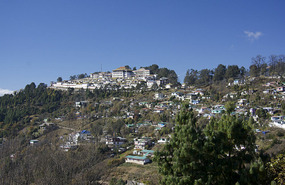
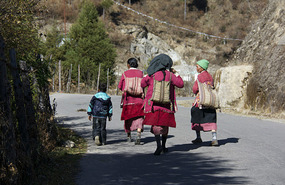
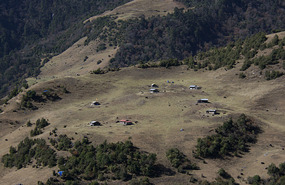

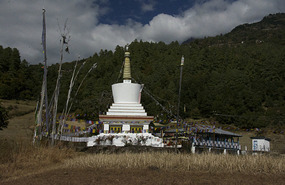
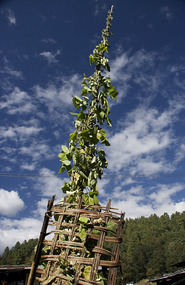
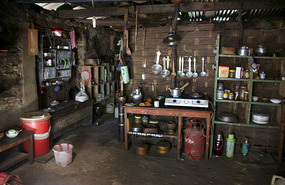








2025-05-22